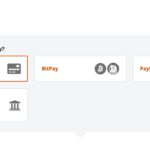Buy now, pay later (BNPL) exists as a cash flow lifeline – or, perhaps, time will tell if the devil is in the details, pointing to a missed payment deluge.
Recent PYMNTS surveys have spotlighted that as many as 14% of online consumers have used BNPL, which translates into about 29 million individuals across the US. About two-thirds of shoppers say that having BNPL as an option would make them more inclined to shop at those retailers. The average age is 42 years old, and 57% earn under $50,000 per year. Just under half live paycheck to paycheck and struggle to pay their monthly bills.
For more than 76% of these consumers, using BNPL means they can buy things more frequently than they otherwise could.
Read also: 14% of Online Consumers Have Used BNPL
Earlier this month, Credit Karma found that 44% of consumers surveyed have used BNPL, but of that tally, 34% have fallen behind by at least one payment. Roughly 72% of the individuals who missed payments said they felt that it caused their credit scores to decline.
Digging Into the Filings
For Affirm, digging into the latest 10-K, delinquencies have indeed crept up – as defined within data tied to past-due loan receivables. Non-delinquent loans are 95% of the total receivables (on an amortized cost basis), which indicates that only a small amount of the “book” has been falling behind. Drilling down into the data, receivables that are up to 29 days past due increased $43.8 million, up from $16.7 million last year. The remainder, up to 119 days past due, stood at $36.1 million, compared with $17.9 million a year ago.
Afterpay has shown in its own reports that through the year that ended in June 2021, receivables impairment expenses stood at $194 million, up from $94 million last year. Provisions for expected credit losses tied to consumer receivables stood at $99.6 million (on a total receivables portfolio of $1.4 billion), up from just under $34 million.
Sezzle, in its latest 10-Q with the SEC, said that gross receivables past due between one to 90 days totaled $22.5 million on $120.5 million in total gross receivables.
The receivables data do not take into account the actual charge-offs – they hint at payments that are past due. Arguably, as loan books increase and the pool of borrowers gets larger, the absolute tally of outstanding receivables should also grow. But the trends bear watching – as do charge-off rates, which typically reflect loans that are past 90 days due. Sezzle’s net charge-offs grew 5% from the end of the year until June. But other metrics speak to efficient receivables management: Afterpay has noted that gross losses within receivables impairment expense are 90 basis points of sales.
Affirm has noted that provisions for credit losses as a percentage of total sales were 8% in the most recent quarter, down from 21% last year. Affirm has said that transitions to new data underwriting models have helped the collections processes.
Depending on how one looks at the data, negative or positive trends emerge – which indicates that for the nascent BNPL model, time will tell.






